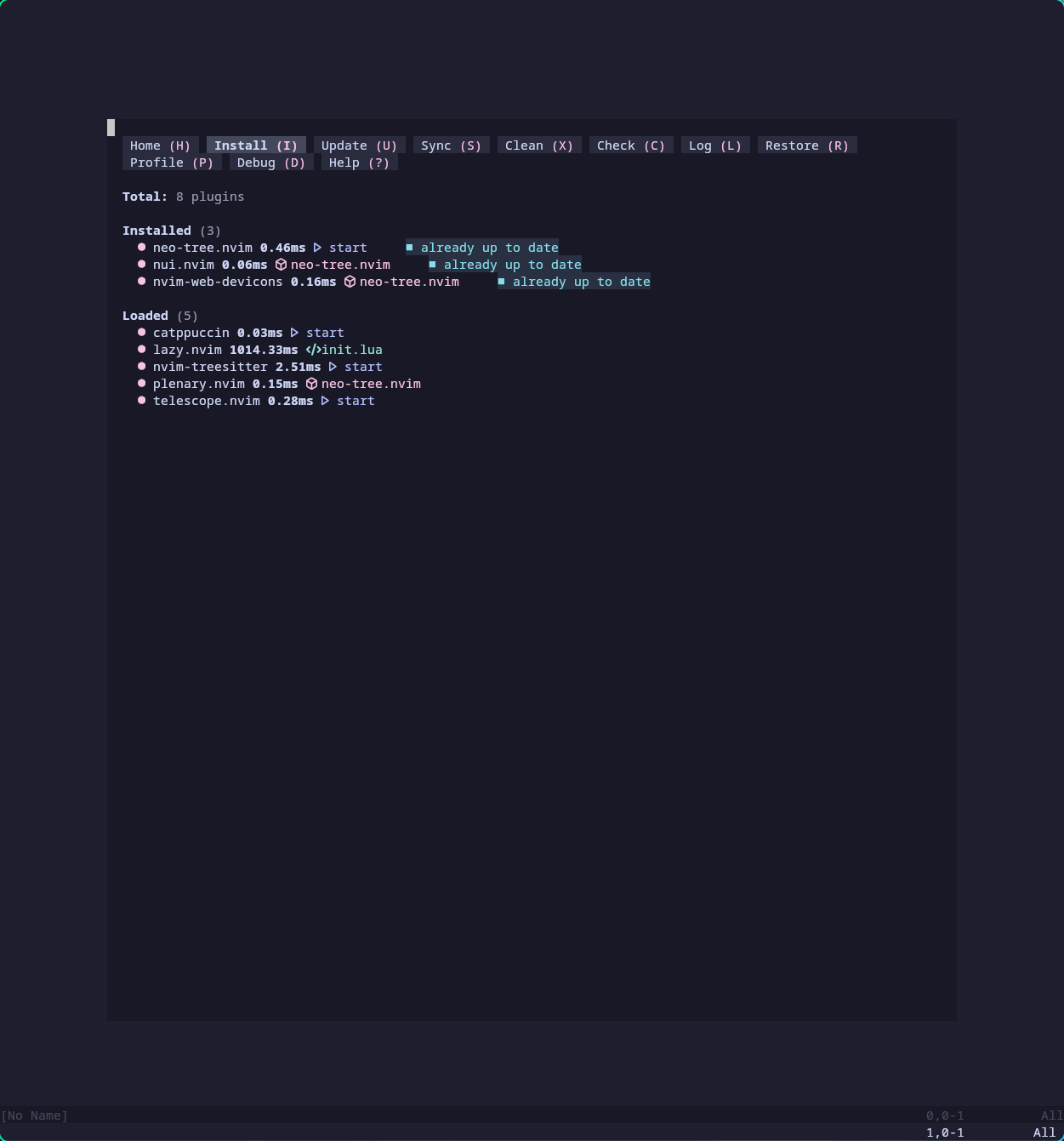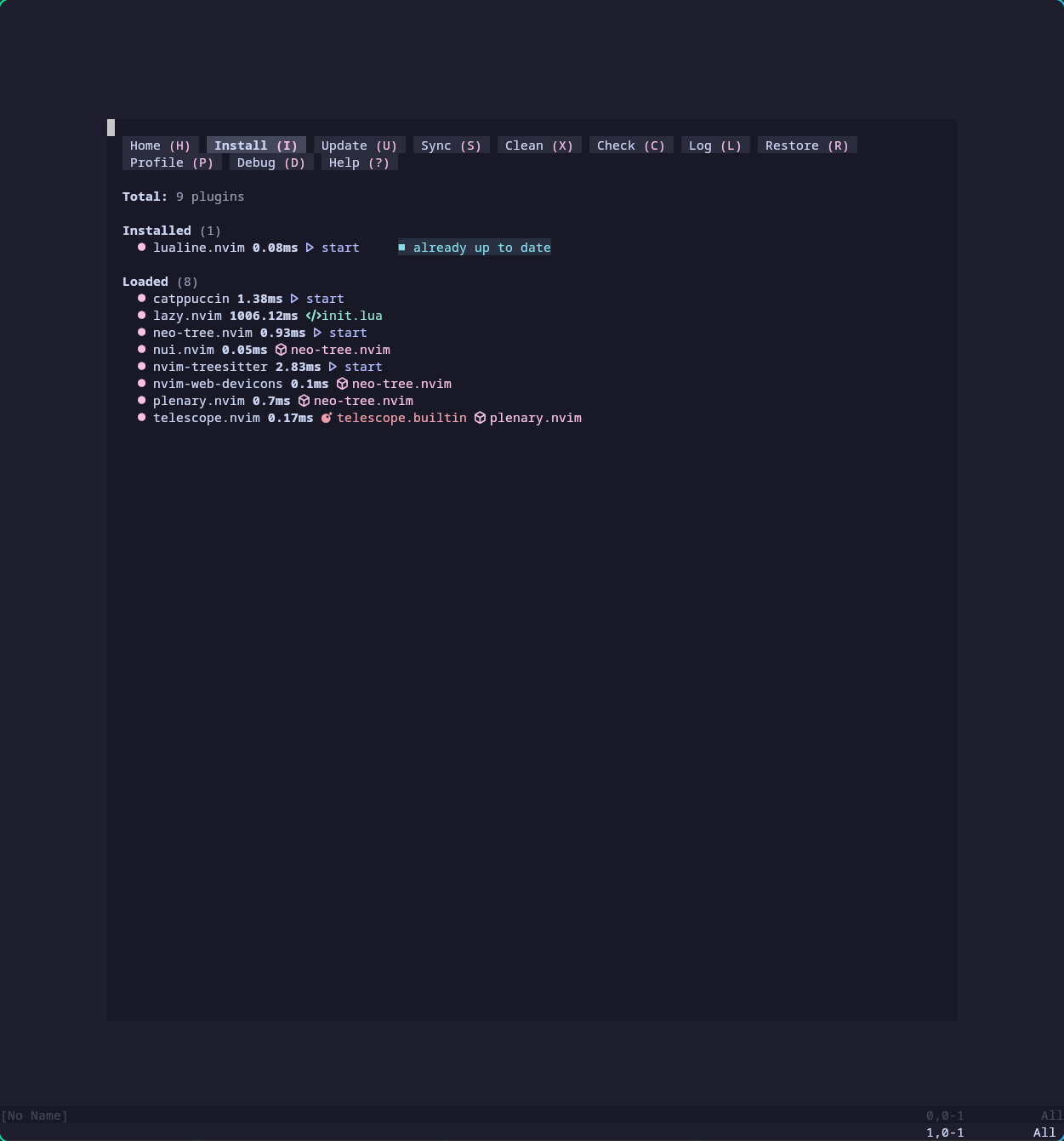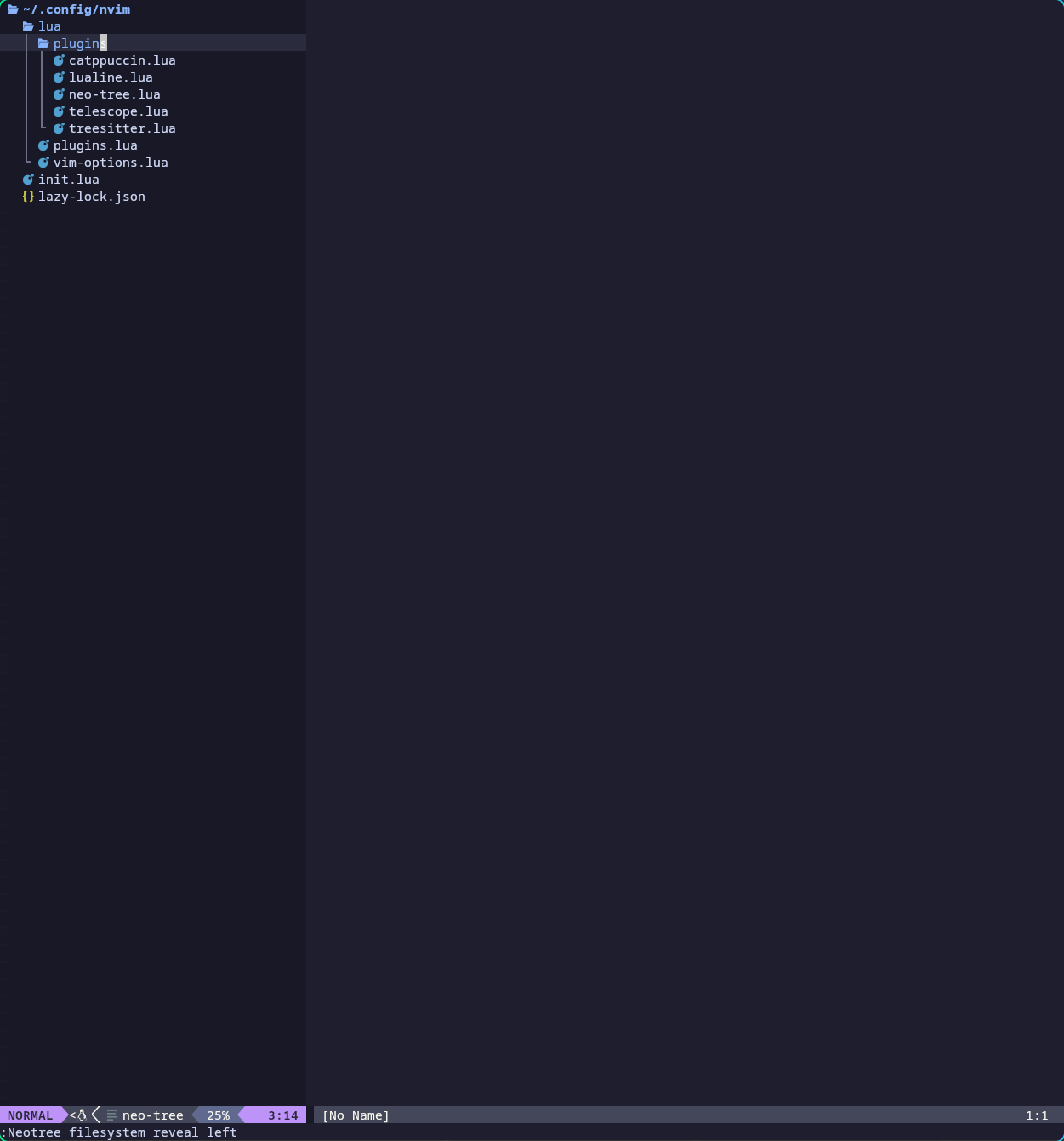Following along: typecraft's Neovim for newbs part 2
If you missed the previous post, see Following along: typecraft’s Neovim for newbs part 1. This post refers to typecraft’s second videp in a six-part series.
Neo-tree
This plugin acts as a file explorer for nvim. See repo here.
The Minimal Example for Lazy code goes into our init.lua in the plugins table (below nvim-treesitter):
{
"nvim-neo-tree/neo-tree.nvim",
branch = "v3.x",
dependencies = {
"nvim-lua/plenary.nvim",
"nvim-tree/nvim-web-devicons",
"MunifTanjim/nui.nvim",
},
}
}
Save, run :source and we get:
 nvim with neo-tree installed
nvim with neo-tree installed
Now we need to setup some keymaps to use neo-tree. In the local builtin area, we add:
vim.keymap.set('n', '<C-n>', ':Neotree filesystem reveal left<CR>', {})
This allows me to open Neotree with ctrl+n:
 Neo-tree open on the left side of the screen
Neo-tree open on the left side of the screen
Useful on its own, surely, but the point of this was to give us an explorer so we can better visualize the modularization we’ll perform on init.lua. typecraft refers to a GitHub page that has since been moved to the official documentation website; find it here.
Plugins Modularization
In init.lua, we remove the entire lua plugins table and put it into a new file called `/lua/plugins.lua’. We also update the first line so it’s a return statement:
return {
{ "catppuccin/nvim", name = "catppuccin", priority = 1000 },
{
'nvim-telescope/telescope.nvim', tag = '0.1.8',
dependencies = { 'nvim-lua/plenary.nvim' }
},
{"nvim-treesitter/nvim-treesitter", build = ":TSUpdate"},
{
"nvim-neo-tree/neo-tree.nvim",
branch = "v3.x",
dependencies = {
"nvim-lua/plenary.nvim",
"nvim-tree/nvim-web-devicons",
"MunifTanjim/nui.nvim",
},
}
}
and we change init.lua to read
require("lazy").setup("plugins")
to point to this file. That’s how I understand it, anyway. This returns a table with the plugin configs. Per the Lazy doc:
Some users may want to split their plugin specs in multiple files. Instead of passing a spec table to setup(), you can use a Lua module. The specs from the module and any top-level sub-modules will be merged together in the final spec, so it is not needed to add require calls in your main plugin file to the other files.
This means Lazy will concatenate found Lua tables found in ~/.config/nvim/lua into a single setup, which is what
require("lazy").setup("plugins")
does. This also allows on-change loading, which is neat. To see this in action, we create a new dir called plugins inside the /lua dir and cut the catppuccin info into a new file in that dir. Additionally, we update catppuccin.lua to include the vim.cmd.colorscheme line from init.lua since that is no longer needed there. In fact, the entire require("catppuccin").setup() line is removed entirely, since the config property automatically calls require(MAIN).setup(opts).
return {
"catppuccin/nvim",
name = "catppuccin",
priority = 1000,
config = function()
vim.cmd.colorscheme "catppuccin"
end
}
With this pattern - using the plugins method of calling in Lua tables in the plugins dir - we can easily manage plugins without making a mess of the init.lua file. With that in mind, there are some more plugins in init.lua that can be placed in their own files. The resulting init.lua looks like:
vim.cmd("set expandtab")
vim.cmd("set tabstop=2")
vim.cmd("set softtabstop=2")
vim.cmd("set shiftwidth=2")
vim.g.mapleader = " "
-- Bootstrap lazy.nvim
local lazypath = vim.fn.stdpath("data") .. "/lazy/lazy.nvim"
if not (vim.uv or vim.loop).fs_stat(lazypath) then
local lazyrepo = "https://github.com/folke/lazy.nvim.git"
local out = vim.fn.system({ "git", "clone", "--filter=blob:none", "--branch=stable", lazyrepo, lazypath })
if vim.v.shell_error ~= 0 then
vim.api.nvim_echo({
{ "Failed to clone lazy.nvim:\n", "ErrorMsg" },
{ out, "WarningMsg" },
{ "\nPress any key to exit..." },
}, true, {})
vim.fn.getchar()
os.exit(1)
end
end
vim.opt.rtp:prepend(lazypath)
local opts = {}
require("lazy").setup("plugins")
and we now have three files inside our lua/plugins/' dir: catppuccin.lua, neo-tree.lua, telescope.lua, and treesitter.lua`.
Now that the plugins are modularized, it’s time to copy over the nvim settings to a new file in order to maintain consistency with how we separated the plugins. So in the init.lua file, we target these lines at the top:
vim.cmd("set expandtab")
vim.cmd("set tabstop=2")
vim.cmd("set softtabstop=2")
vim.cmd("set shiftwidth=2")
vim.g.mapleader = " "
These ought to live in a different Lua module, so before we move them, we add the following to init.lua to point to where they will reside after being moved:
require("vim-options")
require("lazy").setup("plugins")
The require("lazy") line is included in the code block above to indicate where the new line should go. With that line adeed, create a new file in the lua dir called vim-options.lua and paste what we took from the init.lua file.
Not only does modularizing the plugins and nvim configs make it easier to navigate and change settings, it also lays a framework by which we can extend it. That is, adding new plugins, for example, is trivialized: All one needs to do is add a new Lua file in the plugins/ dir, add the appropriate configs, and return it as a Lua table. To test that out, we install lualine. Here’s where we are now:

Installation is simply given as
{
'nvim-lualine/lualine.nvim',
dependencies = { 'nvim-tree/nvim-web-devicons' }
}
so we just add a new file, lualine.lua, to the /plugins/ dir and paste that in with a return (this make it a Lua table, apparently) (I also added the additional lines typecraft indicated here):
return {
'nvim-lualine/lualine.nvim',
config = function()
require('lualine').setup({
options = {
theme = 'dracula'
}
})
end
}
which pops up a cool statusline at the bottom of nvim:

Next up: Completions and LSPs.